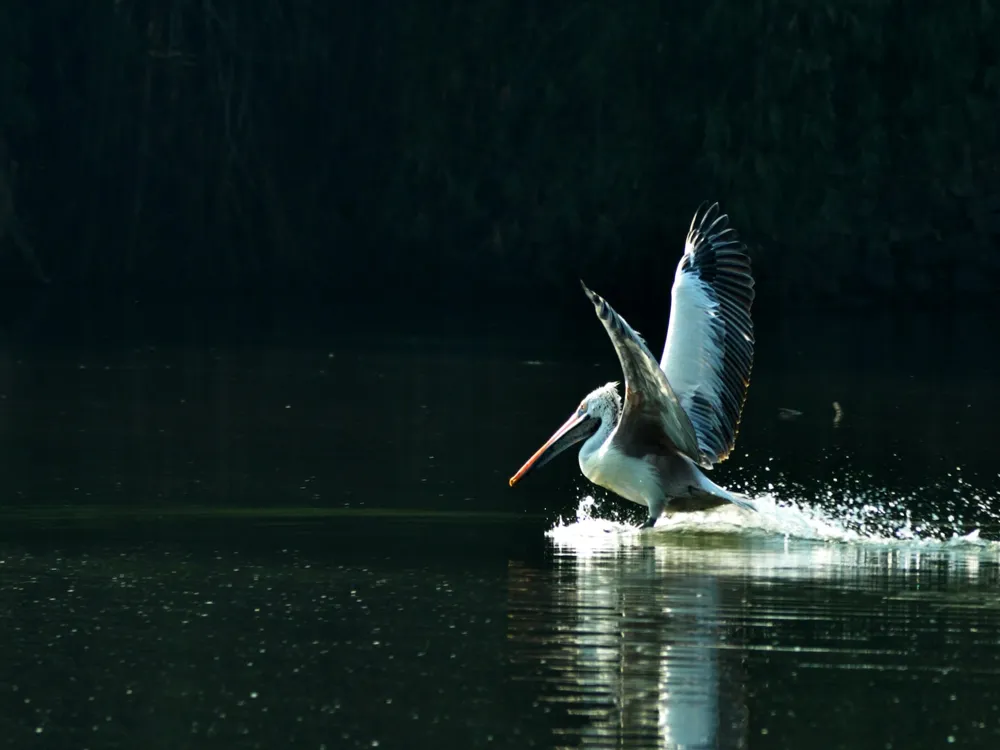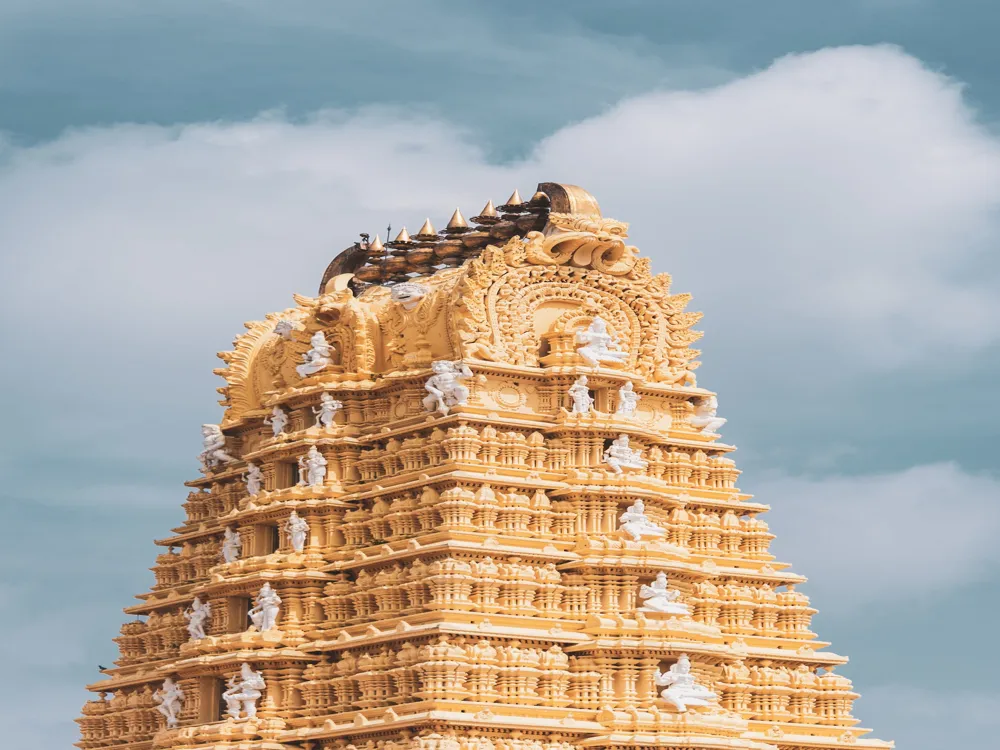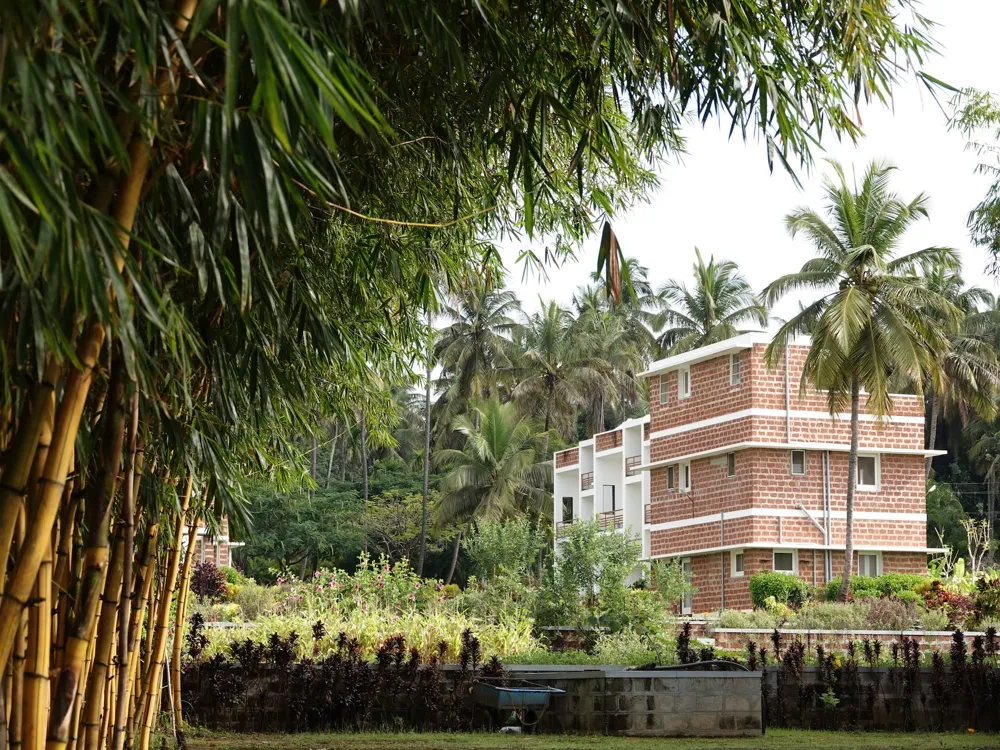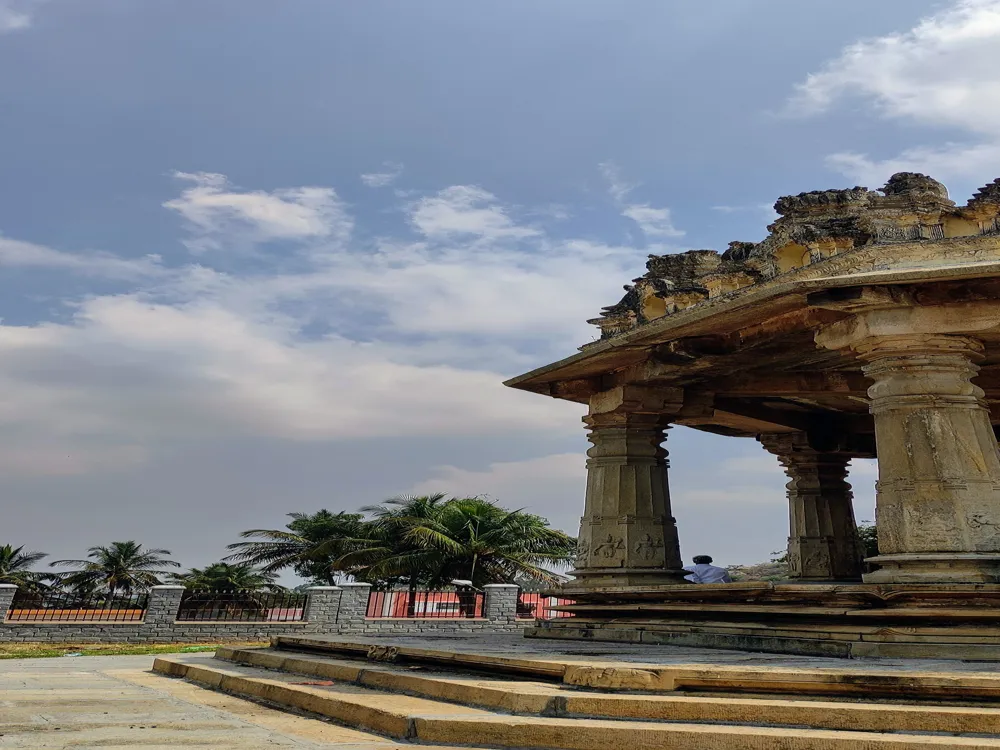The Srikanteswara Temple, located in the historic city of Mysore in Karnataka, India, is a splendid example of the rich cultural and religious heritage of the region. Revered as one of the most significant temples in the city, it draws devotees and tourists alike, who come to bask in its spiritual ambiance and marvel at its architectural grandeur. This temple, dedicated to Lord Shiva, also known as Srikanteshwara, is not just a religious site but a beacon of the intricate temple architecture that characterizes southern India. The history of the Srikanteswara Temple is as fascinating as its architecture. Believed to have been in existence since ancient times, the temple has undergone several renovations and expansions over the centuries, contributing to its current grandiose state. The temple's lore is intertwined with the history of Mysore itself, reflecting the city's transformation and the various dynasties that have ruled over it. The temple stands today not only as a place of worship but also as a testament to the historical and cultural evolution of Mysore. The Srikanteswara Temple is more than just a religious landmark; it is a hub of cultural activities. Throughout the year, the temple premises buzz with various festivals and events, each a vibrant display of local traditions and rituals. These festivals not only provide a glimpse into the religious practices but also showcase the rich tapestry of Indian culture. Devotees and tourists can witness classical music performances, traditional dance forms, and rituals that have been passed down through generations, making their visit to the temple a truly immersive experience. The architecture of Srikanteswara Temple is a magnificent example of the Dravidian style, which is predominant in South Indian temple architecture. The intricate carvings, towering gopurams (gateway towers), and splendid mandapas (pillared halls) are quintessential features of this style. Each element of the temple's architecture is laden with symbolism and artistic excellence, reflecting the skills of the craftsmen who built it. The temple's gopuram, which serves as the gateway to the sanctum, is an imposing structure that captures the essence of Dravidian architecture. Decorated with intricate carvings of gods, goddesses, and mythical creatures, it stands as a testament to the artistic and engineering prowess of the era. The gopuram not only serves as a decorative element but also plays a crucial role in the temple's spiritual symbolism, representing the transition from the material world to the spiritual realm. Inside the temple, the mandapas are a sight to behold. These pillared halls are not just structural elements; they are canvases for exquisite carvings and sculptures. Each pillar tells a story, featuring scenes from Hindu mythology, depictions of deities, and motifs of nature. The mandapas serve as gathering spaces for devotees and are integral to the temple's function as a place of communal worship and celebration. The sanctum sanctorum, housing the deity Lord Srikanteshwara, is the heart of the temple. The sanctum is designed to create an atmosphere of reverence and tranquility, focusing the devotee's attention on the divine. The idol of Lord Srikanteshwara, a manifestation of Lord Shiva, is an embodiment of spiritual energy, and the sanctum is designed to enhance this spiritual experience for the devotees. Visitors should dress modestly, covering shoulders and knees, as a sign of respect for the temple's cultural and religious significance. Check the temple's opening hours and plan your visit during less crowded times. Be aware of the temple's festival calendar to experience special ceremonies and rituals. Photography may be restricted in certain areas of the temple. Always ask for permission and be mindful of devotees' privacy. Maintain a respectful demeanor inside the temple premises. Follow local customs, such as removing shoes before entering the temple and participating in rituals if comfortable. Srikanteswara Temple in Mysore is well-connected and easily accessible. The nearest airport is Mysore Airport, which is about 12 kilometers away. For those traveling by train, Mysore Railway Station is the closest, located just a few kilometers from the temple. Visitors can also reach the temple by road, as Mysore is well-connected by a network of highways and roads. Local buses, taxis, and auto-rickshaws are readily available for transportation within the city. Read More:Overview of Srikanteswara Temple, Mysore, Karnataka
Architecture of Srikanteswara Temple
Tips When Visiting Srikanteswara Temple
Dress Appropriately
Timing and Festivals
Photography
Conduct and Customs
How To Reach Srikanteswara Temple
Srikanteswara Temple
Mysore
Karnataka
NaN onwards
View mysore Packages
Mysore Travel Packages
View All Packages For Mysore
Top Hotel Collections for Mysore

Private Pool

Luxury Hotels

5-Star Hotels

Pet Friendly
Top Hotels Near Mysore
Other Top Ranking Places In Mysore
View All Places To Visit In mysore
View mysore Packages
Mysore Travel Packages
View All Packages For Mysore
Top Hotel Collections for Mysore

Private Pool

Luxury Hotels

5-Star Hotels

Pet Friendly






















